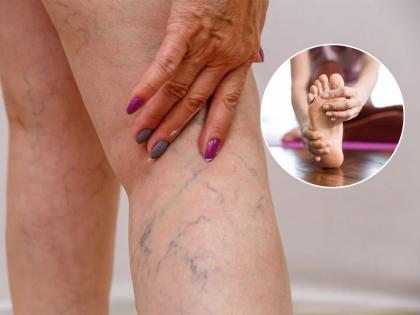Varicose Veins in Women: Causes, Symptoms, and Preventive Measures
By Lokmat English Desk | Updated: December 30, 2024 17:59 IST2024-12-30T17:57:41+5:302024-12-30T17:59:44+5:30
Many women over forty experience varicose veins, with some developing them during pregnancy, although symptoms often improve after childbirth. ...

Varicose Veins in Women: Causes, Symptoms, and Preventive Measures
Many women over forty experience varicose veins, with some developing them during pregnancy, although symptoms often improve after childbirth. Recently, even younger women in their twenties are facing this issue. Varicose veins occur due to poor blood circulation, where blood flows from the legs to the heart. Valves in the blood vessels help prevent backflow, and when these valves fail, blood accumulates, leading to varicose veins. To manage this condition, it's important to know what to do and what to avoid.
Remedies to prevent varicose veins
Yoga practitioners on the Yogini World Instagram page have highlighted three key recommendations to avoid varicose veins:
1. Keep your legs elevated: Individuals with varicose veins should avoid prolonged elevation of their legs. Instead, use a cushion or sit with legs extended to promote circulation.
2. Avoid standing for too long: Standing in one position can worsen varicose veins. If standing is necessary, shift your weight and move your legs periodically.
3. Do not sit with your thighs crossed: Crossing your legs for extended periods can exacerbate the condition. Regularly perform toe and foot movements, as well as leg exercises, to enhance circulation.
Open in app